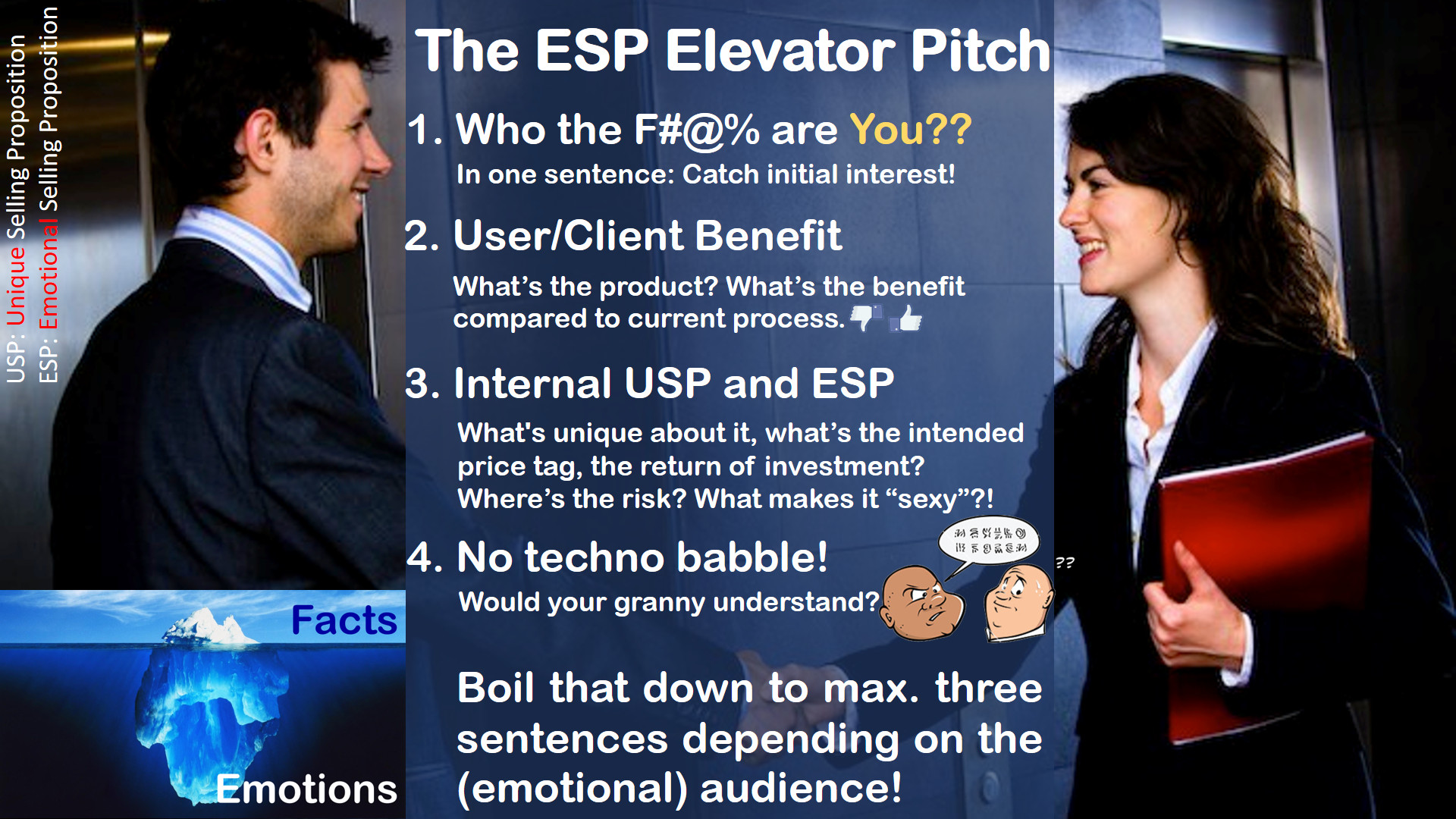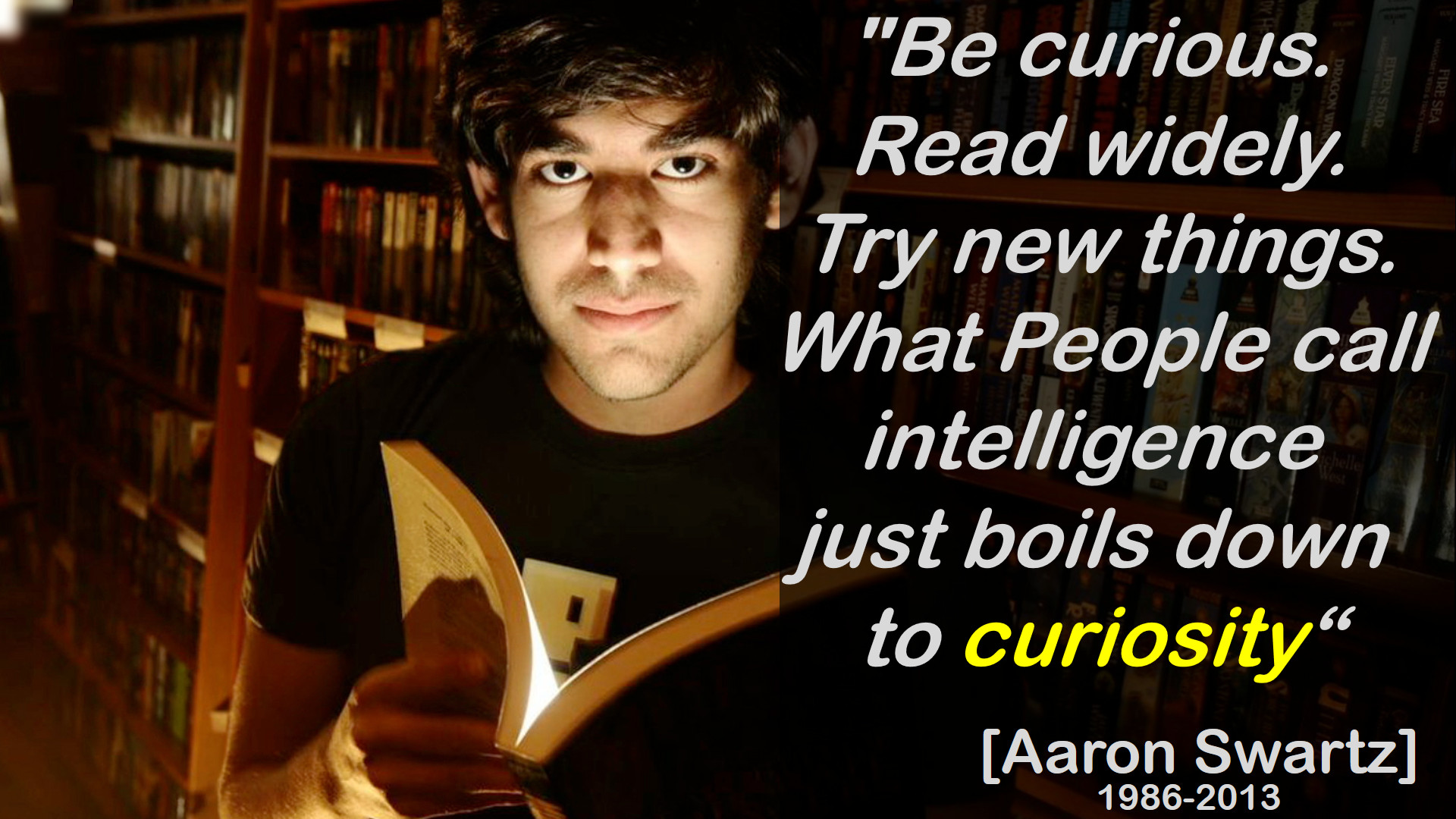With World Routes now behind us, since I wrote it, I had several discussions about my Routes pitch and why all companies should have a business plan and have their employees know it.

The first step developing a business plan is the Elevator Pitch. It is the very summary of what you are doing. Usually, it starts with an essay, then you boil it down. To three minutes (a quick introduction), then to three sentences. Or less. Including a friendly greeting for a good first impression! And it’s a good idea to think about a slogan there, Best for the slogan are three to five words, something that sounds catchy. Like we used “The Isochrones People” for CheckIn.com. “People” we used to emphasize that despite the focus on “data”, it’s made by and for people. Positive emotion.
 But the elevator pitch is meant to make your audience curious. Curiosity is one of the most universal and positive emotions. Curiosity opens more doors than any other emotion!
But the elevator pitch is meant to make your audience curious. Curiosity is one of the most universal and positive emotions. Curiosity opens more doors than any other emotion!
That is why the focus shifts from the Unique Selling Proposition (USP) to the Emotional (ESP) one. But you need both. And you need to boil them down to their core. Not one of your customers will keep more than two or three key points from any given presentation. So if you have your USP(s) and ESP(s), you can make sure your message stays consistent. If you have more than one product, solution, different “client types”, “target groups” or present to clients, investors or your own people, you will create variations. But when you write the different chapters of your business plan, when you develop a presentation, when you communicate, you review them that you always stick to your consistent message(s).
And this is, why I changed my presentations for start-up business development replacing the USP with the
EUSP – The Emotional Unique Selling Proposition
Because it is not about the USP only. Or the ESP. It’s about both.
 These days, in a job interview, I heard a senior and very “seasoned” manager (engineering background) again telling me about the technical benefits of their wonderful tool – in my opinion totally loosing the potential client (that was me). Yeah, I’m “tech-sawy”. But people buy not products and fancy technical gadgets, but they buy for their personal benefit (or that of the company).
These days, in a job interview, I heard a senior and very “seasoned” manager (engineering background) again telling me about the technical benefits of their wonderful tool – in my opinion totally loosing the potential client (that was me). Yeah, I’m “tech-sawy”. But people buy not products and fancy technical gadgets, but they buy for their personal benefit (or that of the company).
Improvements to the processes such have to result in “personal” improvements. For the same reason I believe, A-CDM has adoption problems, as ops people believe they shall be replaced by those tools, they are expensive and the focus is on the technical benefits, neither on the cost savings nor the improvements for the people in the process. I’ve not seen a single “elevator pitch” or a “business plan” in use there either.
When you work on start-up companies and their business ideas, you quickly learn the value of a business plan. And to start with the elevator pitch(es). Not for the investors and banks and such, but for yourself. Bring your thoughts into a structure. Communicate consistently And I can only recommend the very same to anyone in business.
That is the elevator pitch. It just opens the door. But it keeps your message consistent.
And to wrap up, there are some examples, what an EUSP is not:
- Not an Answer. Curiosity is the emotion that opens doors!
- Not a Mission Statement. That’s a separate thing you should have in the business plan, focused on you, not really on your customer.
- No Hot Air. We’re the biggest, best, most advanced, sexiest, bla, bla, blubber.
- No Sales Pitch. Yeah. That’s tough. But you tell what makes you different. Not about price. Or focusing to close a sale.
You’re not selling a car or insurance on the door! With the EUSP you introduce yourself. All the ‘ugly’ selling comes once you created interest (curiosity!). And Trust.
Food for Thought
Comments welcome!
![“Our Heads Are Round so our Thoughts Can Change Direction” [Francis Picabia]](https://foodforthought.barthel.eu/wp-content/uploads/2021/10/Picabia-Francis-Round-Heads.jpg)